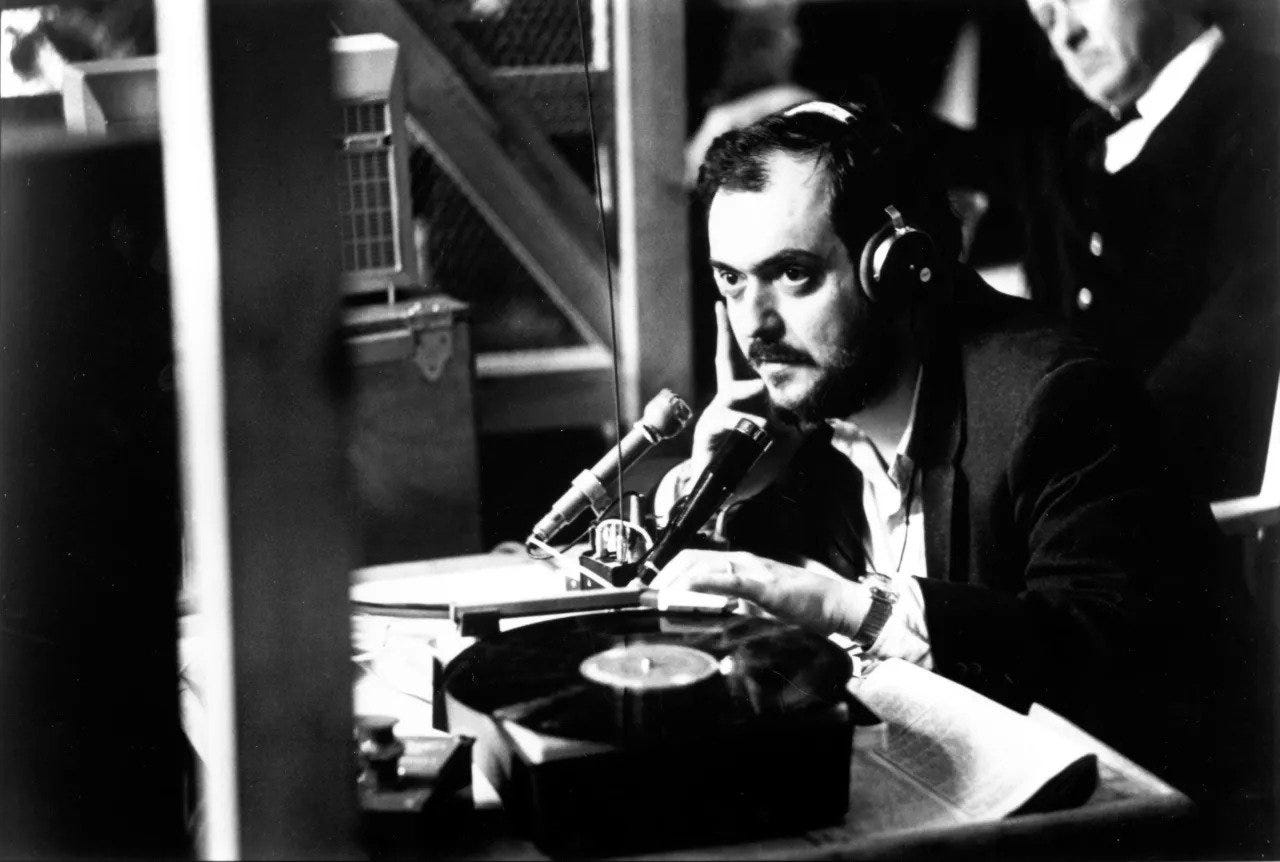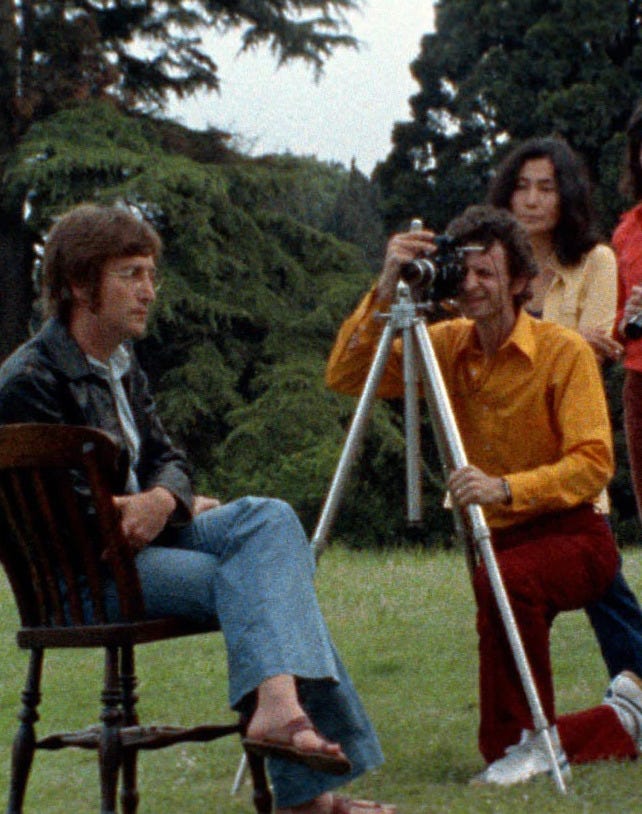Dear Lunatics,
Before we blast off, I want to offer a warm welcome to the many subscribers who recently boarded this newsletter. In these days of attention overwhelm, we guard our inboxes with our lives, allowing only the most practical and necessary messages to invade our busy days.
But you’ve made an exception.
You’ve said yes to spending ten minutes a month sitting on an imaginary sand dune with a stranger, watching the full moon rise over the ocean and talking about who knows what.
Thank you.
It’s been a big week for saying yes.
The House Oversight Committee held a hearing during which they asked three former military officials the following questions:
Has the Pentagon led a secret multidecade program to collect and reconstruct crashed UFOs?
Are we certain the recovered aircraft are of “non-human” origin?
Have any “biologics” been dragged from the wreckage?
Surprisingly, the answer to all these queries was a resounding yes.
No one who spends much time staring up at the night sky can avoid speculating about visitors from outer space, and the prospect of alien contact has been growing ever more mainstream.
Everyone seems to be preparing themselves.
In late May, researchers at SETI (the Search for Extraterrestrial Intelligence) held a dry-run for the reception of a message from E.T.
Masterminded by the Italian media artist Daniela de Paulis, the encoded radio message was sent from a Martian orbiter to Earth, where it was scooped up by satellite dishes. It was then served to and dissected by an eager group of experts and amateurs alike, all determined to decipher the cosmic memo.
At the moment, the message’s content remains untracked.
However, its data has been wrangled into visual form by a group of tireless cryptographers on Discord: two black panels with swarms of white dots.
Are they star maps?
I have absolutely no idea.
But when Daniela de Paulis, the artist behind the simulated alien message, asked me to write up my interpretation, I didn’t let my utter cluelessness stop me.
I said yes.
You can read my attempt here: “Sixteen Days in June.”

After turning in my report to SETI, I continued to stare at these white dots, and as I did so, another association came to mind…
During preproduction for 2001: A Space Odyssey, Stanley Kubrick engaged in a wild, frantic search for a plausible way to depict extraterrestrials.
His wife Christiane, a sculptor in her own right, cast clay aliens in her studio, while his special effects department designed a cone-shaped creature that lit up like a Christmas tree and used a kaleidoscope projector to radiate luminous jellyfish-like entities.
Kubrick gave all these attempts a thumbs down. (Christiane’s sculptures became the world’s most unsettling garden gnomes.)
Then came Kubrick’s most elaborate attempt at conjuring a credible alien.
He relied heavily on polka dots.
The film’s make-up team covered a professional mime in paper-hole punched dots, which they even applied to his eyelids. They then positioned the performer against a similarly polka-dotted background with the goal of creating an optical illusion.
When the speckled mime stood still in a lotus position, he would blend into the background; but when he moved, undulating his arms and turning his head, a humanoid shape would emerge.

The mime was Dan Richter, who was already deeply embedded in the 2001 production. He choreographed the “Dawn of Man” sequence that opens the film and starred as Moonwatcher, the ape-like hominid who learns to use a tapir bone as a tool—a crucial leap in the evolution of technology that is seemingly inspired by a black monolith, an alien technology that appears in the middle of the Africa desert.
The character of Moonwatcher is perhaps most well-known for tossing the bone into the air, which then transforms, via the most famous transition in cinema history, into an orbiting satellite three million years in the future.
I’ve always wondered about the man who could so convincingly play a prehistoric human ancestor, thanks in part to weeks he spent studying the great apes at Regent Park Zoo in London, and then metamorphose into an extraterrestrial far more advanced than modern humans.
When I spoke to Dan Richter on a rainy July morning, he had just emerged from an early swim in the ocean off Provincetown.
I asked him if he found it head-spinning to attempt two such different acting roles.
He shook his head. “I didn’t have time to think about it. The work was so complicated and difficult, and sometimes the rushes didn’t arrive until 4 in the morning because there was so much to do.”
It was one of these late-night rushes that sealed the fate of his spotted alien.
On film, Richter’s slim figure was not lost in the lights but clearly visible against the background.
The polka-dot effect didn’t come off, and Kubrick never spoke of it again.
In the end, the director decided not to show the aliens at all, a deliberate ambiguity that Richter believes is the reason 2001 still tops Sound & Sight’s Director poll as the greatest film of all time.
“Stanley always avoided the literal,” Richter told me, a strategy that leaves viewers of 2001 in a state of psychological tension, never quite able to resolve what they’ve seen.
“While working on the film, we—the crew—knew the meaning of the story,” Richter said. “But if you ask the audience what it all meant, they can’t tell you.”
I told him I could attest to this fact.
I’d watched 2001 nearly as many times as its title without finding the thread of logic that connects the tossed tapir bone, the revolving satellites, and the Star Child, that doe-eyed baby floating through space in a glowing, womb-like orb at the end of the film.
Richter sat forward. “Do you want me to tell you what it means?”
I said yes.
(If you want to preserve 2001’s mystery, skip the next paragraph.)
According to Richter, the bone represents the first weapon used by our ancestors, while the satellites are humanity’s advanced cudgels—hydrogen bombs that the US and Russia have launched into orbit to circle the Earth menacingly. At the film’s conclusion, the Star Child arrives to collect these bombs and dispose of them.
Richter told me another secret he kept during the filming of 2001—one he was petrified Kubrick would discover. He was under active treatment for heroin addiction.
But when his boss did find out, Richter was not immediately fired as he feared. Instead, Kubrick met the disclosure with curiosity and asked detailed questions about the numerous cures and rehabs Richter had tried without success. Richter mentioned that his friend, the Beat writer William Burroughs, had broken his own cycle of addiction with a protocol developed by a Dr. John Dent; however, Dent’s book, Anxiety and its Treatment, had unfortunately gone out of print and was impossible to find.
A week later, Kubrick called Richter into his office and handed him a copy.
This anecdote stands in stark contrast to Kubrick’s image as a cold, calculating operator. While he was certainly cerebral (he raised money for his first movie by chess hustling in Washington Square Park), he clearly had a robust heart beating beneath his cool, mechanical exterior.
And as for Kubrick’s eventual retreat from public life, was that really the product of misanthropy? Although Kubrick did become increasingly reclusive—so much so that a conman was able to gain entrance to London’s most exclusive nightspots by impersonating the director throughout the 1990s—Richter maintains that Kubrick was essentially a family man. “He didn’t have time for a lot of people. When he was home, he was present with his kids, dog on lap, watching cheesy television together.”

Most importantly, Richter disputes Kubrick’s reputation as a control freak.
If you ask the casual movie buff to describe Kubrick, they’ll most likely repeat the common wisdom that he was an inflexible on-set dictator, a professional masochist who put his actors through endlessly repetitive takes like the drill sergeant from Full Metal Jacket. Either that or they might parrot the conspiracy theory that Kubrick faked the Apollo 11 footage. (The computer scientist Joscha Bach joked: “The moon landing was actually a fake that the US government commissioned from Stanley Kubrick. However, Kubrick was such a perfectionist that he filmed it on location.”)
But according to Richter, Kubrick combined deep preparation with an openness to chance. “He didn’t insist on so many takes to get it ‘right,’ but because each take was an opportunity for something new to happen. He was an opportunist, and he was prepared to throw out all his careful planning in case of serendipitous accident.”
Case in point:
When Richter, acting as Moonwatcher, first sent shattered rib bones flying into the air, he thought he’d ruined the shot. Surprisingly, Kubrick told him to keep smashing away. Until that moment, Kubrick had been unsure how he would transport 2001’s audience across three million years instantaneously. But these airborne bone fragments led the director to a Eureka moment. The most famous jump cut in cinematic history—when that twirling bone becomes a wheeling satellite—wasn’t in the script.
Kubrick stumbled upon it by chance.

Richter told me that, in the course of his life, he’d encountered two other people equally devoted to the Muse of mistakes and mishaps: John Lennon and Yoko Ono. Richter lived and worked with the pair from 1969 to 1973, serving as their friend, factotum, reluctant drug supplier, and artistic collaborator (among other contributions, he worked on the Imagine film and his photographs graced the cover of various albums during that period).
Like Kubrick, Richter described Lennon and Ono as original thinkers who were always poised to discover something new in the moment, ready to use mistakes as portals to innovation. “Most people just can’t do that,” he said.
That’s part of what attracted John to Yoko, Richter believes. When you’re considered the greatest songwriter of all time, you can become imprisoned by your own greatness. “It’s very lonely out there,” said Richter, who once saw Lennon vomit before a performance from nerves.
There’s a cost to spending decades balanced on the steep pinnacle of an art form; it’s a burden the rest of us can’t fathom. Richter escaped this fate, despite starring in one of the most famous movies of all time, because he wore a urethane ape mask covered in individually sewn hairs. Arthur C. Clarke called Richter “the most famous unknown actor in the world.”
None of them—Kubrick, Lennon, Ono—chose to make art their life, Richter told me. Their life was art. They were unique humans, almost aliens.
When Lennon first visited Richter’s London apartment, Richter expected to usher in an imposing, swaggering rock star. Instead, the Beatle perched awkwardly on a Chesterfield sofa, looking, as Richter observed, as if he didn’t belong in this world and was “just a stranger on a visit here.”
Kubrick, too, had something extraterrestrial about him. He once confessed to Richter that his own creative gift was a complete mystery to himself, its origin as enigmatic as a slick black monolith in the desert. Even in the heady buzz of the 60s party scene, Kubrick never touched the drugs on offer. He feared a bad trip might break the connection to his genius, which at any moment could go spinning into the void like an astronaut with a severed air hose. And then how would he ever get it back?
Incidentally, both Lennon and Kubrick had UFO sightings.
Lennon was standing naked on his New York balcony one August night when an eerily silent craft with blinking white lights around its rim sailed overhead. He watched it skim the neighboring apartment buildings, turn right at the United Nations building, hover over the Williamsburg bridge, then shoot straight up into the night sky.
Ten years earlier, on the west side of Manhattan, Kubrick stepped out onto his penthouse terrace, taking a break from writing the script for 2001, and spotted a brilliantly lit object slowly passing the crescent Moon. Clarke also saw the UFO and recalled thinking: “This is altogether too much of a coincidence. They are out to stop us from making this movie."
A month later, Kubrick reported his sighting to the U.S. Air Force.
Lennon didn’t relay his sighting to the authorities for fear of being deported (they already thought he was a little crazy), though he made a different type of public disclosure. In “Nobody Told Me, he sings, “There’s UFOs over New York and I ain’t too surprised.”
Of course, when Beatniks and science fiction creators announce that they’ve seen flying saucers, eyes roll. But last week’s Congressional hearing has given the subject new legitimacy, and Kubrick’s artistic conundrum—what do aliens look like?—is now preoccupying U.S. lawmakers.
Are extraterrestrials walking among us like human doppelgangers? Should we check our bushes for grey-skinned garden gnomes? So far, most witnesses testify to seeing fleeting glimpses of elusive, physics-defying spacecraft. Why don’t they just land on the White House lawn? the skeptics cry. Maybe the aliens are fussy directors searching for the perfect take. Or maybe they’re chess hustlers playing with us.
Dan Richter has never seen a UFO illuminate the dunes of Provincetown, although, at times during our interview, I felt as though I were speaking with a contactee.
“I’m one of the luckiest men alive,” he declared, “to have worked with John and Yoko during that amazing period of the Imagine and Plastic Ono Band albums, and with Stanley on 2001…I’m pretty sure I don’t really exist, that this has all happened in my imagination and one day I’ll wake up and realize I’ve had a regular life.”

Talking to Richte, you do marvel at the chance encounters that placed this highly talented but unprepossessing man in just the right spot to be sucked into the orbit of various global superstars at the peak of their fame.
“What’s your secret?” I asked him.
He thought for a bit and then said, “I’ve been open to things. I’ve done things most people never would have done—dangerous, scary, stupid things. And that’s why I’ve been lucky.”
Lately, I’ve begun to think of life as a hearing in which greasy-haired congressmen lean into a microphone and ask you a series of yes-or-no questions.
Will you crawl inside this full-body hominid suit made from human, yak, and horsehair, climb up onto a stage in the middle of a field, and smash cow skulls for a week?
Will you travel in the bowels of this cheap steamer all the way to Tokyo to study Noh and Kabuki theater and perhaps be introduced to a young conceptual artist named Yoko?
Richter is one of those people who said yea to experience more often than nay—thus the need for him to write not one but two memoirs.
Not many of us are so brave. Or reckless.
But maybe we should be.
Each of our decisions is another small polka dot from which the shape of our lives will gradually emerge, our yeses standing out against the shadowy background of our nos.
Our own biographies will always be alien to us, a mystery we’ll never solve.
But we must keep playing our parts until the great director, at long last, calls cut.
See you on the Blue Moon!
—WD








Nice post, Will. The Beatles days carry a lot of memories for me so this was an interesting alternative view of John Lennon. Thanks for sharing.
This has been the best lunar rabbit hole to fall down...it's fascinating to hear about Kubrick and has reignited my fascination with him as an artist and filmmaker. What a wonderful read. Looking forward to the next moon post (and happy new moon!)